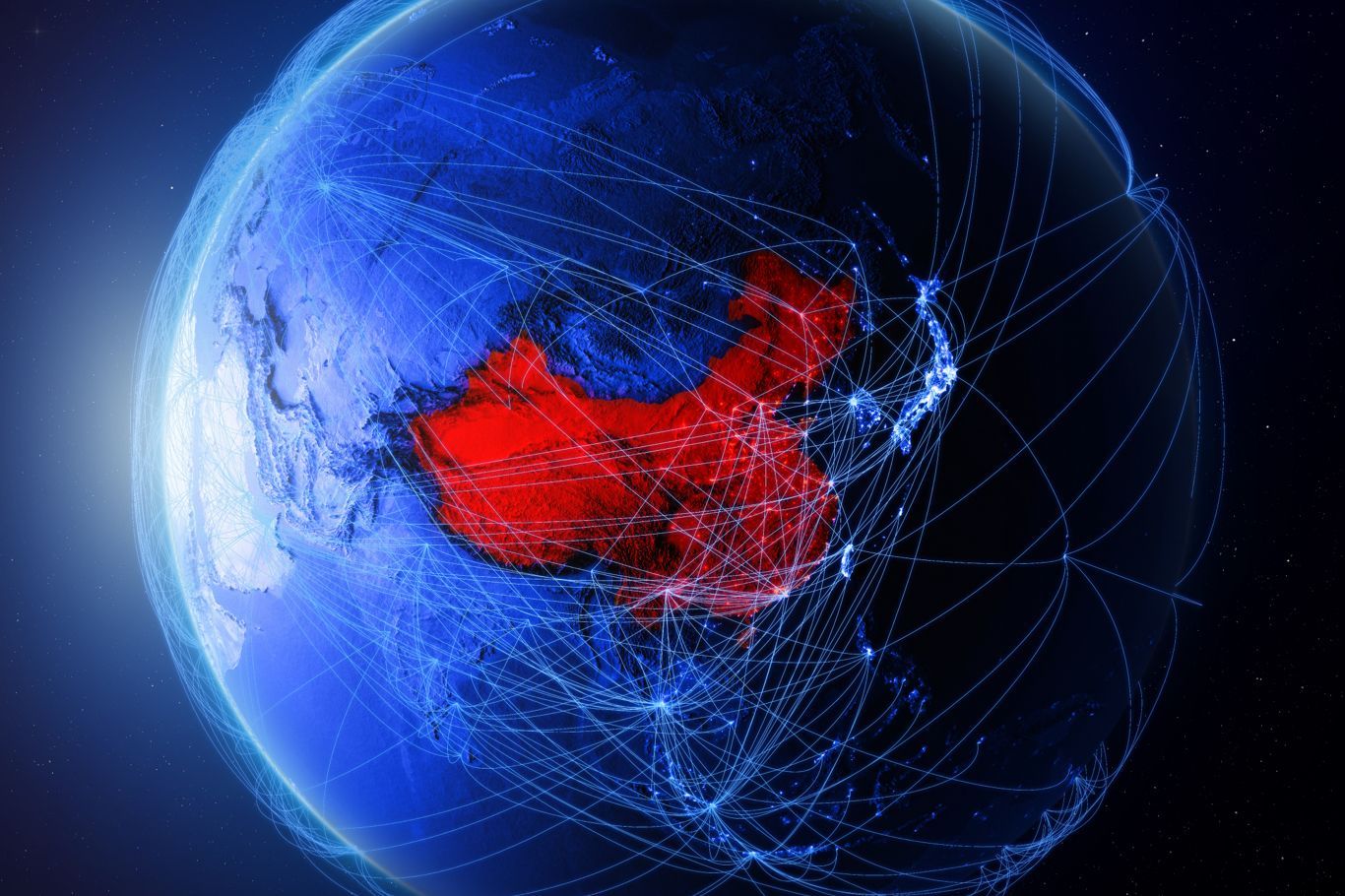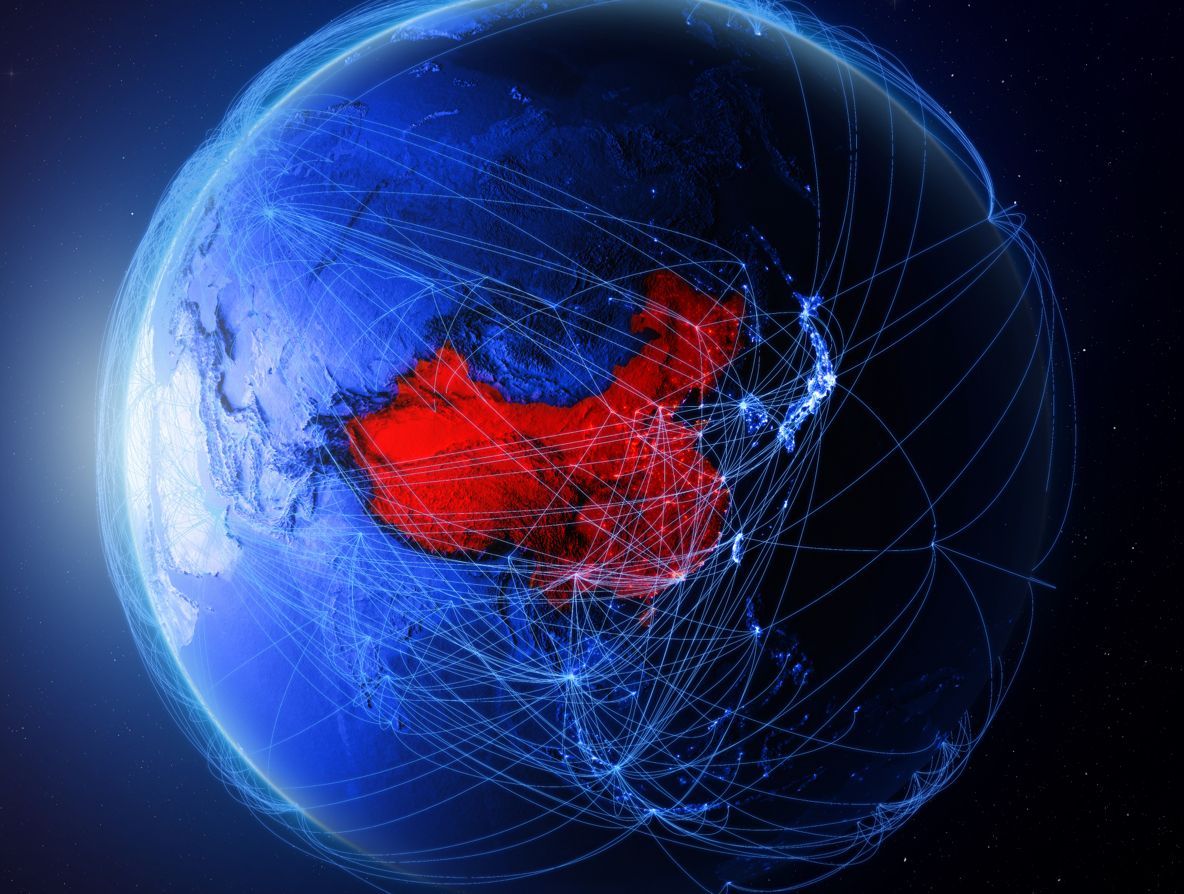02 June 2023
UN COPUOS and frameworks for peaceful and sustainable space - Space News Roundup

(Image: Adobe)
This week the United Nations Committee on the Peaceful Uses of Outer Space (COPUOS) will convene for their 66th meeting. The committee meets annually at its headquarters in Vienna, Austria, and was established in order to promote and review international cooperation in outer space, and the ongoing peaceful uses of it. As space nations and the commercial sector move rapidly forwards, it may be more critical than ever to establish robust frameworks for peace.
The agenda for this year’s meeting includes ways and means of maintaining outer space for peaceful purposes, space and sustainable development and space and climate change. The work of the committee might represent humanity’s best chance of building transparent legal frameworks and as of 2019 it includes 92 nations, including the leading space nations of the US, China and Russia. The work of the UN also represents the most unilaterally binding framework on space law in the form of the Outer Space Treaty (1967), which is also signed by all leading space nations.
However, as leading space powers face the strains of deteriorating international relations, how likely is it that they can once again come to the table and agree to a new and comprehensive framework for the new age? As we continue to highlight, innovation is by far outpacing rule-making and the value of space exploitation is growing.
Furthermore, as highlighted in our Annual Report for 2022, relations appear to be shifting to the point where new ‘space blocs’ are emerging, such as the US-led Artemis Accords and the Chinese International Lunar Research Station project. While the work of COPUOS may not be easy, it may be more necessary than ever.
Urgency over cooperation as space nations rapidly innovate
This urgency is dictated by the pace at which space nations continue to innovate and make plans for sustained space exploration and exploitation, perhaps most notably this week being China. In another symbolic first for the rapidly growing space nation, China launched a crew of three for a 6-month stay on their Tiangong space station, which included the country’s first civilian space traveller.
Their debut civilian launch is indicative of China’s ambition to provide new leadership in space and this week they also laid out a vision for their lunar exploration plans. Speaking at the Jiuquan Satellite Launch Center on Monday, Lin Xiqiang, deputy director of the China Manned Space Agency (CMSA) said that “Recently, the moon landing phase of China’s crewed lunar exploration program has started. The main goal is to send Chinese astronauts to land on the moon for the first time by 2030”. The plans include developing a new generation of crewed rocket, lunar lander and other spaceflight products.
The CMSA also announced details of their crewed lunar rover, with details including that the rover will be driven by two taikonauts and be used for scientific exploration. With the US Artemis project aiming to deliver astronauts to the surface of the moon before the end of the decade, we can see the definite emergence of a new lunar space race, encouraged by the breakdown of international relations. Without a clear set of universal rules for space, there is a real chance that politics and Earthly conflict could be dragged into space.
This race is also encouraged by the prospect of securing essential lunar resources, such water and elements essential to support a sustained lunar presence and in-situ manufacturing. This week a Canadian-based mining company announced its plans to open an office in Adelaide, Australia, to study the use of its technology for remote lunar mining operations. Rockburst Technologies will receive support from the South Australian Landing Pad programme, with both nations of course also benefitting from a fine mining heritage. The US also reinforced their space relations with Australia last week, with the agreement in-principle of a technology safeguards agreement (TSA), which would allow for the use of US technology, such as rockets, in Australia.
Oxygen, water, silicon and metals are some resources that can be exploited on the moon, and the desire to appropriate them could be what is also driving the new lunar space race. Among those resources is also Helium-3, ideal for use in future fusion reactors and has the potential to answer humankind’s clean energy needs. Researchers have previously said that two space shuttle cargo bay’s worth could “power the United States for a year at the current rate of energy consumption” (Asia Times, 2021).
The challenges are then how to prevent conflict erupting in the race to secure these resources (which humankind sadly have long history of doing) and how to fairly and transparently manage and share these resources for all. The Outer Space Treaty doesn’t necessarily prevent the appropriation of resources, but does forbid appropriation of territory. This ambiguity and lack of clarity is what could prevent us securing a peaceful future in outer space.

China offering new leadership in space (Image: Adobe)
Frameworks for cooperative peace in space
It may seem unlikely in this current climate that the “big three” of the the US, China and Russia will come together and establish a framework that allows for fair and peaceful uses of space, driven by skepticism over each-others intentions. Furthermore, new treaties or changes to the current rules may not be seen as favourable when it comes to resource mining and nations may not be so keen to share any space resources that they extract.
However, other ther efforts are being made to build universal frameworks, one being the US-led Artemis Accords. They are described as “Principles for a Safe, Peaceful, and Prosperous Future” and aim to set out “best practices to enhance the governance of the civil exploration and use of outer space” (NASA). This week Spain became the 25th nation to sign up to the accords, shortly after the Czech Republic on May 3rd.
The accords may seem like an ideal way safely guarantee a peaceful future in space, building on principles of transparency, laying out frameworks for safe and fair resource extraction and committing to adhere to the principles of the OST. However, it would seem highly unlikely that nations such as Russia or China would be willing to sign up. In contrast, China is embarking on its ILRS project, also reaching out to other nations to follow their leadership.
China are building bridges in other ways as well, namely with their Tiangong space station. On Monday the CMSA again highlighted their intention to seek international cooperation on the new station. Furthermore, China appear to be seeking cooperation through scientific and commercial activity and this week the Chinese state media outlet, Global Times, discussed these points with western academics Olivier Contant, the French-American Executive Director of the International Academy of Astronautics, and Erick Lansard, a professor at the Nanyang Technological University. When asked about the prospect of a new space race, Contant said that “…the key to collaboration is through scientific and commercial aspects, as the scientific world is free from political tensions.” Contant continued to say that “the future cooperation for China-US in space lies in commercialization as long as US opens its doors”, and this may be a valid point.
Companies and the commercial sector are not necessarily bound by political conflict and may have the ability to bring nations together. This type of cooperation may also be the only real option for US-China relations in space, while the prohibitive US Wolf Amendment remains in place, which prevents NASA from using government funds to directly engage with China.
The idea of this style of cooperation was demonstrated this week. Japan has announced their plans to establish space-based solar power (SBSP) and launch the first transmitters in 2025. Sourcing a constant stream of untapped energy and beaming it wireless to Earth could answer our energy needs, combat CO2 emissions and is also being explored by ESA and China. Furthermore, Kyoto University professor Naoki Shinohara presented the idea of SBSP being used as a means of working with other nations, saying that “if we can demonstrate our technology ahead of the rest of the world, it will also be a bargaining tool for space development with other countries,” (Nikkei, 2023).
While it may seem unlikely that leading nations may be willing to commit to new UN treaties to govern space, or even update the Outer Space Treaty for the modern age, we can see other efforts being made in order to construct a peaceful framework. Whether it be the Artemis Accords, China’s ILRS and Tinagong projects or cooperation through science and commercialisation, there is clearly a desire to commit to a peaceful and constructive future. However, what we can also see is that adversaries are unwilling to agree to each other’s terms and geopolitical tensions are spreading into the space arena.
The UN COPUOS meeting may not bring about instant results, but it is still the place where space nations can meet and hopefully discuss how to build new frameworks together. One of their biggest success stories still provides us with the blueprint from which we can build on today, in the form of the Outer Space Treaty. Success is possible and we must continue to support the work of the committee. We look forwards to reading the outcome of the meeting throughout the week.
External Links
This Week
*News articles posted here are not property of ANASDA GmbH and belong to their respected owners. Postings here are external links only.
Our future in space

(Image: Adobe)
02 June 2023
UN COPUOS and frameworks for peaceful and sustainable space - Space News Roundup
This week the United Nations Committee on the Peaceful Uses of Outer Space (COPUOS) will convene for their 66th meeting. The committee meets annually at its headquarters in Vienna, Austria, and was established in order to promote and review international cooperation in outer space, and the ongoing peaceful uses of it. As space nations and the commercial sector move rapidly forwards, it may be more critical than ever to establish robust frameworks for peace.
The agenda for this year’s meeting includes ways and means of maintaining outer space for peaceful purposes, space and sustainable development and space and climate change. The work of the committee might represent humanity’s best chance of building transparent legal frameworks and as of 2019 it includes 92 nations, including the leading space nations of the US, China and Russia. The work of the UN also represents the most unilaterally binding framework on space law in the form of the Outer Space Treaty (1967), which is also signed by all leading space nations.
However, as leading space powers face the strains of deteriorating international relations, how likely is it that they can once again come to the table and agree to a new and comprehensive framework for the new age? As we continue to highlight, innovation is by far outpacing rule-making and the value of space exploitation is growing.
Furthermore, as highlighted in our Annual Report for 2022, relations appear to be shifting to the point where new ‘space blocs’ are emerging, such as the US-led Artemis Accords and the Chinese International Lunar Research Station project. While the work of COPUOS may not be easy, it may be more necessary than ever.
Urgency over cooperation as space nations rapidly innovate
This urgency is dictated by the pace at which space nations continue to innovate and make plans for sustained space exploration and exploitation, perhaps most notably this week being China. In another symbolic first for the rapidly growing space nation, China launched a crew of three for a 6-month stay on their Tiangong space station, which included the country’s first civilian space traveller.
Their debut civilian launch is indicative of China’s ambition to provide new leadership in space and this week they also laid out a vision for their lunar exploration plans. Speaking at the Jiuquan Satellite Launch Center on Monday, Lin Xiqiang, deputy director of the China Manned Space Agency (CMSA) said that “Recently, the moon landing phase of China’s crewed lunar exploration program has started. The main goal is to send Chinese astronauts to land on the moon for the first time by 2030”. The plans include developing a new generation of crewed rocket, lunar lander and other spaceflight products.
The CMSA also announced details of their crewed lunar rover, with details including that the rover will be driven by two taikonauts and be used for scientific exploration. With the US Artemis project aiming to deliver astronauts to the surface of the moon before the end of the decade, we can see the definite emergence of a new lunar space race, encouraged by the breakdown of international relations. Without a clear set of universal rules for space, there is a real chance that politics and Earthly conflict could be dragged into space.
This race is also encouraged by the prospect of securing essential lunar resources, such water and elements essential to support a sustained lunar presence and in-situ manufacturing. This week a Canadian-based mining company announced its plans to open an office in Adelaide, Australia, to study the use of its technology for remote lunar mining operations. Rockburst Technologies will receive support from the South Australian Landing Pad programme, with both nations of course also benefitting from a fine mining heritage. The US also reinforced their space relations with Australia last week, with the agreement in-principle of a technology safeguards agreement (TSA), which would allow for the use of US technology, such as rockets, in Australia.
Oxygen, water, silicon and metals are some resources that can be exploited on the moon, and the desire to appropriate them could be what is also driving the new lunar space race. Among those resources is also Helium-3, ideal for use in future fusion reactors and has the potential to answer humankind’s clean energy needs. Researchers have previously said that two space shuttle cargo bay’s worth could “power the United States for a year at the current rate of energy consumption” (Asia Times, 2021).
The challenges are then how to prevent conflict erupting in the race to secure these resources (which humankind sadly have long history of doing) and how to fairly and transparently manage and share these resources for all. The Outer Space Treaty doesn’t necessarily prevent the appropriation of resources, but does forbid appropriation of territory. This ambiguity and lack of clarity is what could prevent us securing a peaceful future in outer space.

China offering new leadership in space (Image: Adobe)
Frameworks for cooperative peace in space
It may seem unlikely in this current climate that the “big three” of the the US, China and Russia will come together and establish a framework that allows for fair and peaceful uses of space, driven by skepticism over each-others intentions. Furthermore, new treaties or changes to the current rules may not be seen as favourable when it comes to resource mining and nations may not be so keen to share any space resources that they extract.
However, other ther efforts are being made to build universal frameworks, one being the US-led Artemis Accords. They are described as “Principles for a Safe, Peaceful, and Prosperous Future” and aim to set out “best practices to enhance the governance of the civil exploration and use of outer space” (NASA). This week Spain became the 25th nation to sign up to the accords, shortly after the Czech Republic on May 3rd.
The accords may seem like an ideal way safely guarantee a peaceful future in space, building on principles of transparency, laying out frameworks for safe and fair resource extraction and committing to adhere to the principles of the OST. However, it would seem highly unlikely that nations such as Russia or China would be willing to sign up. In contrast, China is embarking on its ILRS project, also reaching out to other nations to follow their leadership.
China are building bridges in other ways as well, namely with their Tiangong space station. On Monday the CMSA again highlighted their intention to seek international cooperation on the new station. Furthermore, China appear to be seeking cooperation through scientific and commercial activity and this week the Chinese state media outlet, Global Times, discussed these points with western academics Olivier Contant, the French-American Executive Director of the International Academy of Astronautics, and Erick Lansard, a professor at the Nanyang Technological University. When asked about the prospect of a new space race, Contant said that “…the key to collaboration is through scientific and commercial aspects, as the scientific world is free from political tensions.” Contant continued to say that “the future cooperation for China-US in space lies in commercialization as long as US opens its doors”, and this may be a valid point.
Companies and the commercial sector are not necessarily bound by political conflict and may have the ability to bring nations together. This type of cooperation may also be the only real option for US-China relations in space, while the prohibitive US Wolf Amendment remains in place, which prevents NASA from using government funds to directly engage with China.
The idea of this style of cooperation was demonstrated this week. Japan has announced their plans to establish space-based solar power (SBSP) and launch the first transmitters in 2025. Sourcing a constant stream of untapped energy and beaming it wireless to Earth could answer our energy needs, combat CO2 emissions and is also being explored by ESA and China. Furthermore, Kyoto University professor Naoki Shinohara presented the idea of SBSP being used as a means of working with other nations, saying that “if we can demonstrate our technology ahead of the rest of the world, it will also be a bargaining tool for space development with other countries,” (Nikkei, 2023).
While it may seem unlikely that leading nations may be willing to commit to new UN treaties to govern space, or even update the Outer Space Treaty for the modern age, we can see other efforts being made in order to construct a peaceful framework. Whether it be the Artemis Accords, China’s ILRS and Tinagong projects or cooperation through science and commercialisation, there is clearly a desire to commit to a peaceful and constructive future. However, what we can also see is that adversaries are unwilling to agree to each other’s terms and geopolitical tensions are spreading into the space arena.
The UN COPUOS meeting may not bring about instant results, but it is still the place where space nations can meet and hopefully discuss how to build new frameworks together. One of their biggest success stories still provides us with the blueprint from which we can build on today, in the form of the Outer Space Treaty. Success is possible and we must continue to support the work of the committee. We look forwards to reading the outcome of the meeting throughout the week.
Share this article
External Links
This Week
*News articles posted here are not property of ANASDA GmbH and belong to their respected owners. Postings here are external links only.
02 June 2023
UN COPUOS and frameworks for peaceful and sustainable space - Space News Roundup

(Image:Adobe)
This week the United Nations Committee on the Peaceful Uses of Outer Space (COPUOS) will convene for their 66th meeting. The committee meets annually at its headquarters in Vienna, Austria, and was established in order to promote and review international cooperation in outer space, and the ongoing peaceful uses of it. As space nations and the commercial sector move rapidly forwards, it may be more critical than ever to establish robust frameworks for peace.
The agenda for this year’s meeting includes ways and means of maintaining outer space for peaceful purposes, space and sustainable development and space and climate change. The work of the committee might represent humanity’s best chance of building transparent legal frameworks and as of 2019 it includes 92 nations, including the leading space nations of the US, China and Russia. The work of the UN also represents the most unilaterally binding framework on space law in the form of the Outer Space Treaty (1967), which is also signed by all leading space nations.
However, as leading space powers face the strains of deteriorating international relations, how likely is it that they can once again come to the table and agree to a new and comprehensive framework for the new age? As we continue to highlight, innovation is by far outpacing rule-making and the value of space exploitation is growing.
Furthermore, as highlighted in our Annual Report for 2022, relations appear to be shifting to the point where new ‘space blocs’ are emerging, such as the US-led Artemis Accords and the Chinese International Lunar Research Station project. While the work of COPUOS may not be easy, it may be more necessary than ever.
Urgency over cooperation as space nations rapidly innovate
This urgency is dictated by the pace at which space nations continue to innovate and make plans for sustained space exploration and exploitation, perhaps most notably this week being China. In another symbolic first for the rapidly growing space nation, China launched a crew of three for a 6-month stay on their Tiangong space station, which included the country’s first civilian space traveller.
Their debut civilian launch is indicative of China’s ambition to provide new leadership in space and this week they also laid out a vision for their lunar exploration plans. Speaking at the Jiuquan Satellite Launch Center on Monday, Lin Xiqiang, deputy director of the China Manned Space Agency (CMSA) said that “Recently, the moon landing phase of China’s crewed lunar exploration program has started. The main goal is to send Chinese astronauts to land on the moon for the first time by 2030”. The plans include developing a new generation of crewed rocket, lunar lander and other spaceflight products.
The CMSA also announced details of their crewed lunar rover, with details including that the rover will be driven by two taikonauts and be used for scientific exploration. With the US Artemis project aiming to deliver astronauts to the surface of the moon before the end of the decade, we can see the definite emergence of a new lunar space race, encouraged by the breakdown of international relations. Without a clear set of universal rules for space, there is a real chance that politics and Earthly conflict could be dragged into space.
This race is also encouraged by the prospect of securing essential lunar resources, such water and elements essential to support a sustained lunar presence and in-situ manufacturing. This week a Canadian-based mining company announced its plans to open an office in Adelaide, Australia, to study the use of its technology for remote lunar mining operations. Rockburst Technologies will receive support from the South Australian Landing Pad programme, with both nations of course also benefitting from a fine mining heritage. The US also reinforced their space relations with Australia last week, with the agreement in-principle of a technology safeguards agreement (TSA), which would allow for the use of US technology, such as rockets, in Australia.
Oxygen, water, silicon and metals are some resources that can be exploited on the moon, and the desire to appropriate them could be what is also driving the new lunar space race. Among those resources is also Helium-3, ideal for use in future fusion reactors and has the potential to answer humankind’s clean energy needs. Researchers have previously said that two space shuttle cargo bay’s worth could “power the United States for a year at the current rate of energy consumption” (Asia Times, 2021).
The challenges are then how to prevent conflict erupting in the race to secure these resources (which humankind sadly have long history of doing) and how to fairly and transparently manage and share these resources for all. The Outer Space Treaty doesn’t necessarily prevent the appropriation of resources, but does forbid appropriation of territory. This ambiguity and lack of clarity is what could prevent us securing a peaceful future in outer space.

China offering new leadership in space (Image: Adobe)
Frameworks for cooperative peace in space
It may seem unlikely in this current climate that the “big three” of the the US, China and Russia will come together and establish a framework that allows for fair and peaceful uses of space, driven by skepticism over each-others intentions. Furthermore, new treaties or changes to the current rules may not be seen as favourable when it comes to resource mining and nations may not be so keen to share any space resources that they extract.
However, other ther efforts are being made to build universal frameworks, one being the US-led Artemis Accords. They are described as “Principles for a Safe, Peaceful, and Prosperous Future” and aim to set out “best practices to enhance the governance of the civil exploration and use of outer space” (NASA). This week Spain became the 25th nation to sign up to the accords, shortly after the Czech Republic on May 3rd.
The accords may seem like an ideal way safely guarantee a peaceful future in space, building on principles of transparency, laying out frameworks for safe and fair resource extraction and committing to adhere to the principles of the OST. However, it would seem highly unlikely that nations such as Russia or China would be willing to sign up. In contrast, China is embarking on its ILRS project, also reaching out to other nations to follow their leadership.
China are building bridges in other ways as well, namely with their Tiangong space station. On Monday the CMSA again highlighted their intention to seek international cooperation on the new station. Furthermore, China appear to be seeking cooperation through scientific and commercial activity and this week the Chinese state media outlet, Global Times, discussed these points with western academics Olivier Contant, the French-American Executive Director of the International Academy of Astronautics, and Erick Lansard, a professor at the Nanyang Technological University. When asked about the prospect of a new space race, Contant said that “…the key to collaboration is through scientific and commercial aspects, as the scientific world is free from political tensions.” Contant continued to say that “the future cooperation for China-US in space lies in commercialization as long as US opens its doors”, and this may be a valid point.
Companies and the commercial sector are not necessarily bound by political conflict and may have the ability to bring nations together. This type of cooperation may also be the only real option for US-China relations in space, while the prohibitive US Wolf Amendment remains in place, which prevents NASA from using government funds to directly engage with China.
The idea of this style of cooperation was demonstrated this week. Japan has announced their plans to establish space-based solar power (SBSP) and launch the first transmitters in 2025. Sourcing a constant stream of untapped energy and beaming it wireless to Earth could answer our energy needs, combat CO2 emissions and is also being explored by ESA and China. Furthermore, Kyoto University professor Naoki Shinohara presented the idea of SBSP being used as a means of working with other nations, saying that “if we can demonstrate our technology ahead of the rest of the world, it will also be a bargaining tool for space development with other countries,” (Nikkei, 2023).
While it may seem unlikely that leading nations may be willing to commit to new UN treaties to govern space, or even update the Outer Space Treaty for the modern age, we can see other efforts being made in order to construct a peaceful framework. Whether it be the Artemis Accords, China’s ILRS and Tinagong projects or cooperation through science and commercialisation, there is clearly a desire to commit to a peaceful and constructive future. However, what we can also see is that adversaries are unwilling to agree to each other’s terms and geopolitical tensions are spreading into the space arena.
The UN COPUOS meeting may not bring about instant results, but it is still the place where space nations can meet and hopefully discuss how to build new frameworks together. One of their biggest success stories still provides us with the blueprint from which we can build on today, in the form of the Outer Space Treaty. Success is possible and we must continue to support the work of the committee. We look forwards to reading the outcome of the meeting throughout the week.
Share this article
External Links
This Week
*News articles posted here are not property of ANASDA GmbH and belong to their respected owners. Postings here are external links only.











